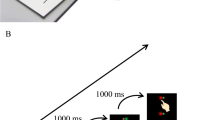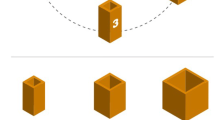Abstract
Nine young infants were followed longitudinally from 4 to 15 months of age. They performed multijoint reaching movements to a stationary target presented at shoulder height. Time-position data of the hand, shoulder, and elbow were collected using an optoelectronic measurement system. In addition, we recorded electromyographic activity (EMG) from arm extensors and flexors. This paper documents how control problems of proximal torque generation may account for the segmented hand paths seen during early reaching. Our analysis revealed the following results: first, muscular impulse (integral of torque) increased significantly between the ages of 20 (reaching onset) and 64 weeks. That is, as infants got older they produced higher levels of mean muscular flexor torque during reaching. Data were normalized by body weight and movement time, so differences are not explained by anthropometric changes or systematic variations in movement time. Second, while adults produced solely flexor muscle torque to accomplish the task, infants generated flexor and extensor muscle torque at shoulder and elbow throughout a reach. At reaching onset more than half of the trials revealed this latter kinetic profile. Its frequency declined systematically as infants got older. Third, we examined the pattern of muscle coordination in those trials that exhibited elbow extensor muscle torque. We found that during elbow extension coactivation of flexor and extensor muscles was the predominant pattern in 67% of the trials. This pattern was notably absent in comparable adult reaching movements. Fourth, fluctuations in force generation, as measured by the rate of change of total torque (NET) and muscular torque (MUS), were more frequent in early reaching (20–28 weeks) than in the older cohort (52–64 weeks), indicating that muscular torque production became increasingly smoother and task-efficient. Our data demonstrate that young infants have problems in generating smooth profiles of proximal joint torques. One possible reason for this imprecision in infant force control is their inexperience in predicting the magnitude and direction of external forces. That infants learned to consider external forces is documented by their increasing reliance on these forces when performing voluntary elbow extensions. The patterns of muscle coordination underlying active elbow extensions were basically the same as during the prereaching phase, indicating that the formation of functional synergies is based on a basal repertoire of innervation patterns already observable in very early, spontaneous movements.
Similar content being viewed by others
Author information
Authors and Affiliations
Additional information
Received: 5 January 1996 / Accepted: 19 August 1996
Rights and permissions
About this article
Cite this article
Konczak, J., Borutta, M. & Dichgans, J. The development of goal-directed reaching in infants II. Learning to produce task-adequate patterns of joint torque. Exp Brain Res 113, 465–474 (1997). https://doi.org/10.1007/PL00005599
Issue Date:
DOI: https://doi.org/10.1007/PL00005599




